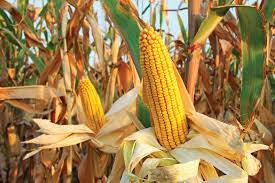
Disease management of Corn
Share
Introduction
Corn is one of the most widely cultivated crops globally, serving as a staple food, animal feed, and a key ingredient in various industrial products. However, like all crops, corn is susceptible to a range of diseases that can significantly impact yield and quality. Effective disease management is crucial for maintaining a healthy corn crop and ensuring a bountiful harvest.
In this blog, we will explore the common diseases that affect corn, the symptoms to look out for, and the best practices for managing and preventing these diseases. By understanding the challenges and implementing proactive measures, farmers can safeguard their crops and optimize their production. Join us as we delve into the world of corn disease management and discover strategies to keep your cornfields thriving.

Downy mildew: Peranosclerospora sorghi
Symptoms:
Systemic infection as chlorosis which appears 10-14 days.
Leaves tend to be narrower and more erect.
Plants infected early usually die at four weeks after infection.
Chlorosis is noticeable on the lower half of the leaf: Half-leaf symptom
Chlorosis gradually covers the entire leaf surface at later stage
A white downy growth is seen on the lower leaf surface under humid warm conditions
Systemically infected plants do not form cob and if it forms, they are small and poorly filled Sorghum

Downy Mildew in maize: Leaf Symtoms and condiaphore & conidia
Crazytop downy mildew: Sclerophthoram macrospora
Symptoms:
Leaves are narrow, strap like and leathery.
Stunting and chlorotic striping of leaves.
Excessive tillering and rolling and twisting of upper leaves
Partial or complete changes normal floral parts to small leaves: crazy top
Plants may produce numerous ear shoots and phyllody of ears.
Pathogen:
Mycelium - non-septate, inter cellular, systemic and obligate
Conidiophores are erect, fragile, hyaline usually dichotomously branched
Sporangia germinate directly and infect the plants
Oospores are spherical, thick walled and deep brown
Mode of spread:
Primary spread through oospores in soil and seed borne.
Secondary spread by conidia / sporangia
Favourable Conditions:
Temperature ranging from 24-26o C.
Continuous drizzling / rainfall.
Relative humidity more than 80 %
Management:
Use disease free healthy seeds.
Drying seed to less than 14% moisture.
Deep tillage and crop rotations for more than three years
Roguing of diseased plants and alternate grass hosts
Use disease resistance hybrids viz., TNAU COH(M)6, COH(M)8 and COH(M)11
Seed treatment with metalaxyl @ 6g/kg of seeds Foliar spray with metalaxyl + mancozeb @ 1000 g or mancozeb 1000 g/ha after initial symptom / 20 DAP and 40 DAP

Charcoal rot: Macrophomina phaseolina
Symptoms:
Plants exhibit wilting symptoms
Plants mature, the fungus spreads into the lower internodes of the stalk
Causing premature ripening, shredding and breaking at the crown region
Stalk of infected plants are with greyish streak
The pith becomes shredded and greyish black minute sclerotia develop on the vascular bundles
Shredding of the interior of the stalk often causes stalks to break at crown
Shredding of Stalk

Pathogen:
Fungus produces round or globular to irregular and black sclerotia Pycnidia appear on the stalks.
Pycndiospores are colourless, oval and single celled
Favourable Conditions:
Dry and hot weather during and after flowering favours the disease.
Soil temperature 30 - 42°C, low soil moisture and low soil pH (5.4 - 6.0). Survival and
Mode of Spread:
Primary spread – Sclerotia in infected crop and debris in soil.
Secondary spread – Wind-borne pycnidiospores.
Management:
Follow crop rotation
Avoidance of water stress at flowering time reduced disease incidence
Avoid nutrient stress.
Apply potash @ 80 kg/ha in endemic areas
Soil application of P. fluorescens (or) T. viride @ 2.5 kg / ha + 50 kg of well decomposed FYM (mix 10 days before application) or sand at 30 days after sowing

Summary
Downy mildew and charcoal rot are serious threats to corn crops. Downy mildew, caused by fungal spores, stunts plants, yellows leave, and can even kill young corn. It thrives in warm, humid weather. Charcoal rot, caused by another fungus, weakens stalks and reduces yield during hot, dry periods. Both diseases survive in soil or on plant debris. To combat them, farmers can use disease-resistant corn varieties, practice crop rotation, and apply fungicides or beneficial microbes to the soil.
FAQs:
Besides the methods mentioned, are there any cultural practices that can help manage downy mildew and charcoal rot?What are some potential downsides to using fungicides for disease control?
How can farmers identify if their corn crop is infected with downy mildew or charcoal rot?
